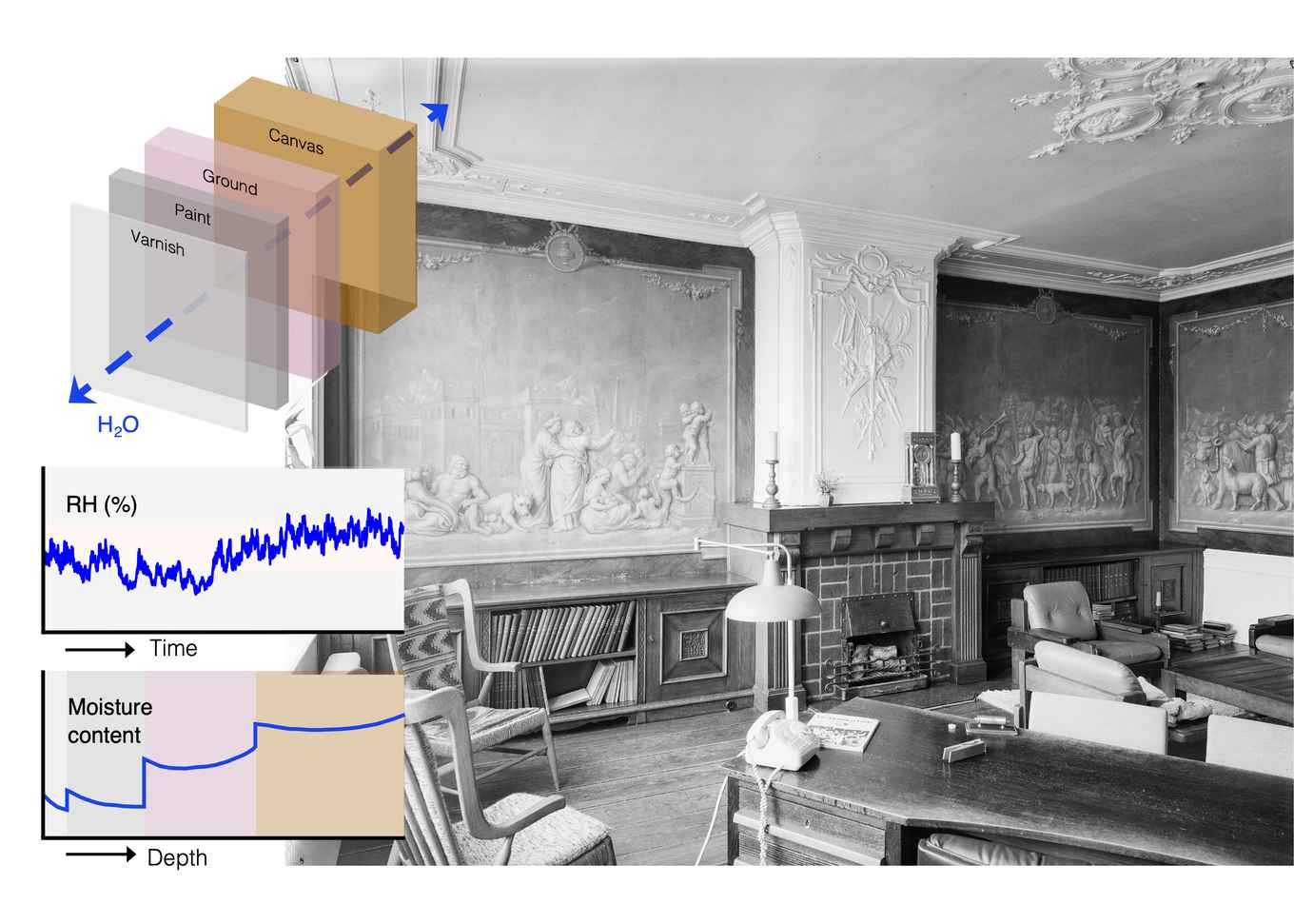How water moves through paintings
8 December 2022

Humidity is one of the main factors that affect the stability of paintings. For art conservators as well as owners of painted art, it is relevant to know how a painting is affected by varying levels of moisture in the air, and to determine at which levels damage starts to occur. These questions are not easy to answer, because they require both fundamental knowledge about the many chemical reactions that are happening in the paint and a detailed understanding of water transport in paintings. Tackling this last question, Duivenvoorden designed a versatile moisture transport model for complex heritage materials. The model can be used to investigate at which humidity levels or humidity fluctuation patterns water starts to penetrate deep into the paint layers, where it can cause lasting chemical change. Additionally, the model can be coupled to experimental indoor climate data to see whether the current indoor climate could pose a risk for a given artwork.
As a test case, the computational model was applied to the 18th-century painted wall hangings in the Hofkeshuis in the Dutch city of Almelo. These paintings are unique as a research object because they have never been moved out of the room and have undergone only minor restoration treatment. The results showed how the indoor climate in the room led to small gradients in moisture concentration inside the paint layers, which may explain the curious degradation pattern encountered on the south wall of the room. Duivenvoorden’s model is an important first step towards a more complete computational prediction toolbox that uses extensive knowledge about moisture transport and chemical degradation mechanisms to connect environmental conditions to undesirable changes in oil paintings.
Abstract of the paper
Oil paintings are complex, multi-layered systems that are prone to chemical degradation. While it is increasingly recognised that water plays an important role in these degradation reactions, little is known about moisture concentrations in oil paint systems and their temporal variation in response to fluctuating ambient air humidity. This knowledge is necessary to further preventive conservation, specifically to establish optimal environmental conditions to safeguard works of art for future generations. We developed a transient one-dimensional moisture transport model based on Fickian diffusion enabling the integration of experimentally recorded relative humidity data. Moisture sorption and transport data for painting materials have been reviewed from literature showing that each component of a painting has rather distinct properties. Including the properties of the individual layers enabled predicting the behaviour of a multi-layered painting system. A sensitivity study indicated that the response of a multilayer is determined by the combination of diffusion coefficients, isotherm shapes, maximum water contents, layer thicknesses, period of RH fluctuation and stacking order of the layers. Finally, the model was employed to investigate a case study of 18th-century painted wall hangings in a historic house to illustrate the insights that can be gained from this approach and the types of conservation-related questions that can be answered.
Paper details
Jorien R. Duivenvoorden, Rick P. Kramer, Margriet H. van Eikema Hommes, Piet D. Iedema, Joen J. Hermans, Katrien Keune: The distribution and transport of water in oil paintings: A numerical moisture diffusion model. International Journal of Heat and Mass Transfer, Volume 202, 2023, 123682, DOI: 10.1016/j.ijheatmasstransfer.2022.123682.